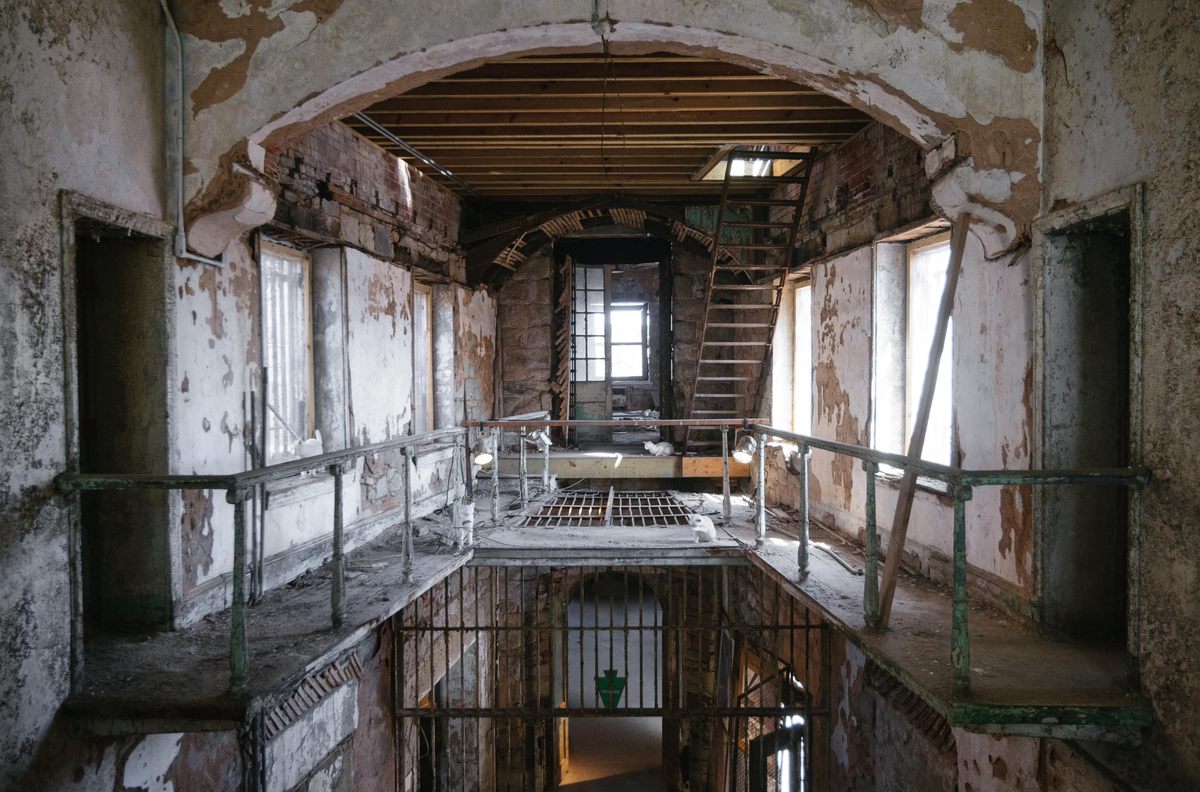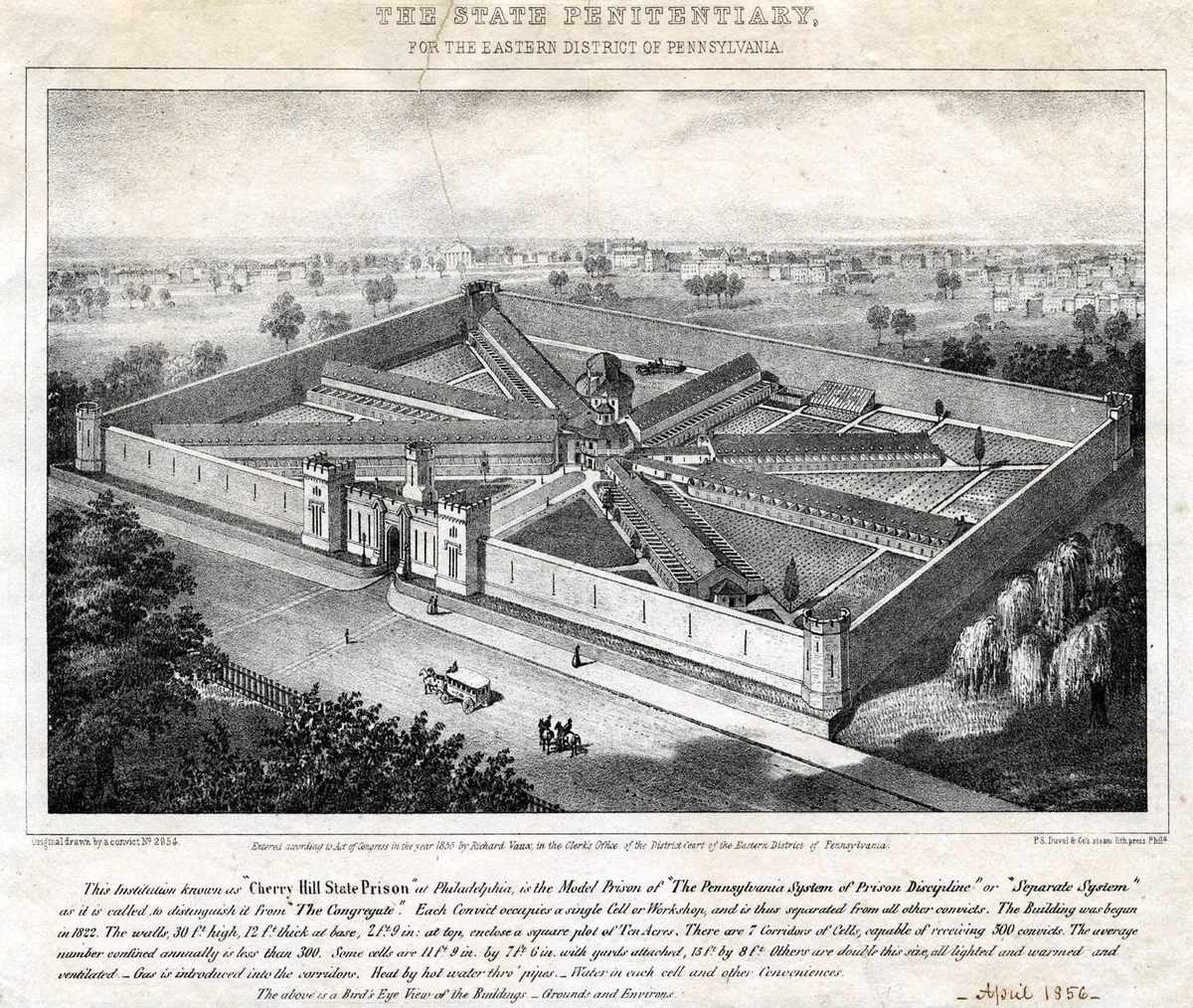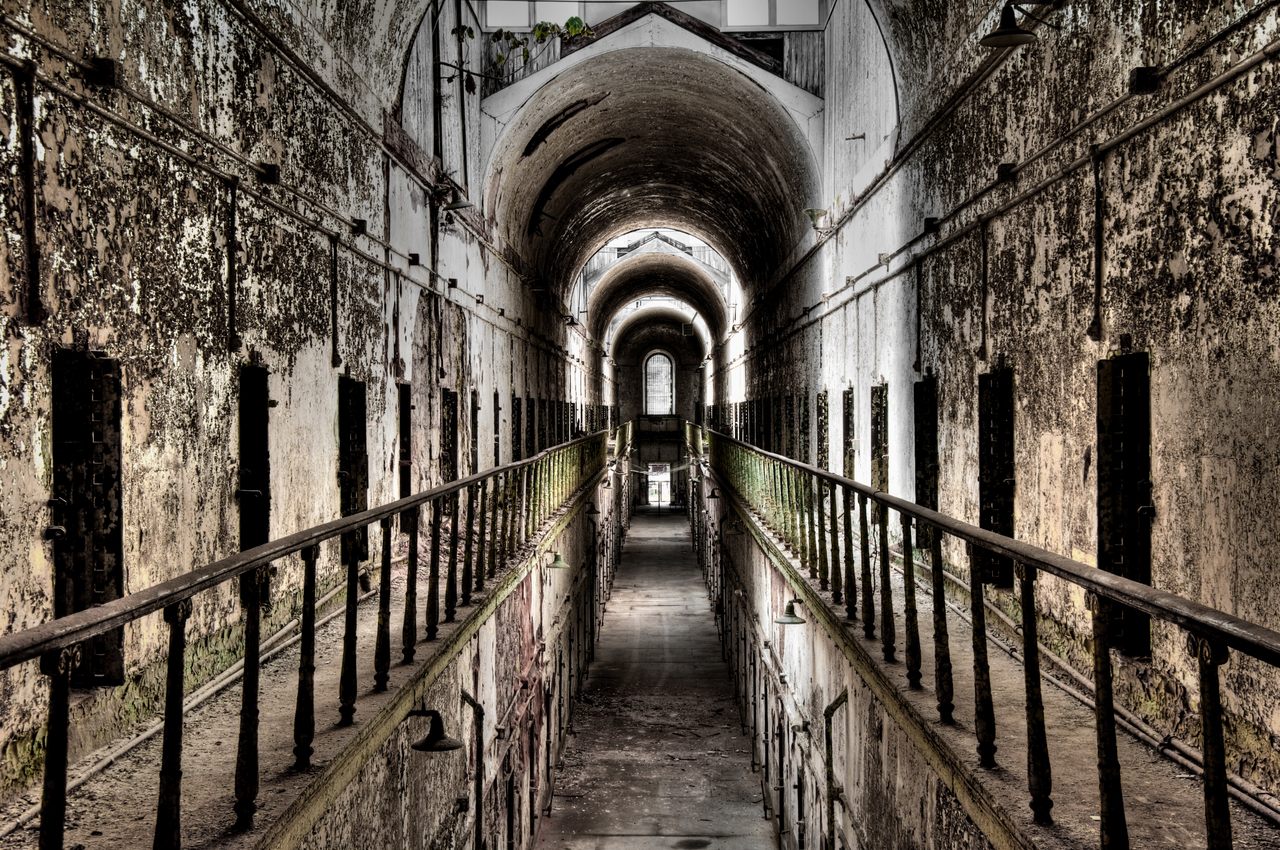Bump in the Night: The Rackety Reason People Think This Prison Is Haunted
Sound and electricity play all kinds of tricks at Eastern State Penitentiary.
There’s nothing spooky about the Rite Aid on Fairmount Avenue in Philadelphia. Inside, you’ll find bright fluorescent lights, neatly lined-up products, and happy signage reminding you to use your shopper loyalty card. This modern drug store is far from a place paranormal investigators might want to explore.
They do, however, want to investigate the famous—and famously haunted—Eastern State Penitentiary just two blocks to the west. Nonetheless, while Eastern State Penitentiary certainly played host to many unjust and inhumane events, the Rite Aid was actually built on top of an 18th-century mass grave site. Yet the drug store has no reputation for ghostly activity.
On the surface, there’s an obvious difference between these two locations. One is a brightly-lit, modern chain store, and the other is a dark, partially-ruined prison.

Chris French, Head of the Anomalistic Psychology Research Unit at Goldsmiths, University of London, has a hunch about why people find some places to be more haunted than others. “The moment that you say to someone, ‘And this room is supposed to be haunted,’ your whole psychological mindset changes,” he says. “You enter the room and you notice creeks and little changes in temperatures and all sorts of things that you probably wouldn’t have noticed if somebody hadn’t put that in your mind.”
French has dedicated his academic career to discovering what exactly happens to the human mind when we experience ostensibly paranormal events. According to him, an important ingredient to inspiring paranormal experiences is context.
Eastern State Penitentiary is certainly not lacking in context. The architect, John Haviland, constructed its eerily beautiful gothic revival structure with vaulted ceilings in the cell blocks and the individual cells. Oddly enough, it might be these church-like features that give us a deep feeling of discomfort.

“Things like going from high levels of illumination to low levels of illumination, going into rooms with very high ceilings then going into places with dark corners—this all makes sense from an evolutionary point of view; for most of our evolutionary history, it was very risky to go into a cave,” French explains. “There could be things up there waiting to jump down on you or you couldn’t see in the corners. So the idea would be that we’d naturally evolved to be somewhat anxious or at least more aroused when we go into those kinds of settings.”
But it’s not just the appearance of the architecture that transmits disturbing feelings—the barrel-vaulted ceilings also spread sound, as does the design itself.
When Eastern State Penitentiary opened in 1829, it was meant to be a new kind of prison, based on the newly implemented “Pennsylvania System,” which was a method of silent, solitary confinement.

The original structure was purpose-built to serve this new penal system. Designed for surveillance in a time before security cameras, the building’s original cell blocks all radiate out from the central surveillance hub; one guard could stand in the middle of the room and see every point of the prison by turning in a circle. Because of this “radial plan,” the hard surfaces on the floors, walls, and ceilings of Eastern State are excellent at transmitting sound, according to Trevor Cox, Professor of Acoustic Engineering at the University of Salford.
“When we get further away outdoors, it gets quieter as it spreads out,” Cox explains. “But in a tube, which is kind of what these corridors are like, there’s nothing to stop the sounds from going on and on forever. So you can get sound propagating really long distances—like kilometers.”
This could explain why many hopeful ghost hunters have picked up recordings of voices or footsteps, which could be coming from people in other parts of the building.

As the years passed, more outside factors began to have an influence on the building. Eastern State Penitentiary closed in 1971 and was left abandoned. “Nature literally took this place back,” recalls Greg Cowper, Curatorial Assistant in the Department of Entomology at the Academy of Natural Sciences in Philadelphia. “The trees were higher than the cell blocks.”
For well over a decade, Cowper has studied the unique biodiversity that developed here during that period of abandonment. Various animals and insects made the prison their home during that time.
The hot, dry environment inside the cell blocks is perfect for mummification, and as a result, Cowper has made a collection of petrified critters, which contains both invertebrates and vertebrates. His most memorable find was a mummified cat, which is now proudly displayed in the back of his exhibit at Eastern State Penitentiary.

There’s ample evidence that animals still make their home in Eastern State Penitentiary. The proliferation of nooks and crannies, not to mention the extensive underground utility system, remain a more hospitable home than the busy city outside the walls. So when witnesses reported seeing a cell door moving back and forth on its own accord, the staff later discovered a raccoon in the cell, trying to get out.
“What I’ve got here is a simple explanation for why people hear things and see things and things are moving,” says Cowper. “There’s cats, there’s possums, there’s snakes, there’s a thousand different kinds of large insects.”
Combined with the acoustics of the uniquely designed building, the sounds of any scurrying animals could carry over long distances.

Another favorite tool ghost hunters use at Eastern State Penitentiary are EMF (Electromagnetic Fields) Detectors. Whether or not these devices detect ghosts, they are certainly detecting EMF variations, which are caused by many things from cell phones and radio waves (on the lower frequency) to lightning and radioactive waste (on the higher frequency).
Studies suggest that EMFs might have an impact on our brains. The late Michael Persinger, cognitive neuroscientist at Laurentian University in Sudbury, Ontario, conducted a series of experiments where he exposed the right hemisphere of the brain to EMFs and found that a notable number of test subjects sensed a presence where no one stood.
Academics like French say that more research is needed to confirm or deny these findings. But whether people sense EMFs in their minds or just on EMF detectors, Eastern State certainly has many generations of electrical systems.
Eastern State Penitentiary’s largest fundraiser, Halloween Nights, features a series of haunted houses and other Halloween-themed programming. But since late 2019, Eastern State no longer allows paranormal investigations. Their website notes that “at this time, we are focusing our resources on maintaining and expanding programs that explore the penitentiary’s history and connections to contemporary criminal justice reform.” While visitors can take daytime and nighttime history tours, the former prison is shifting its focus away from spooky topics and more towards a better justice system today.




















Follow us on Twitter to get the latest on the world's hidden wonders.
Like us on Facebook to get the latest on the world's hidden wonders.
Follow us on Twitter Like us on Facebook